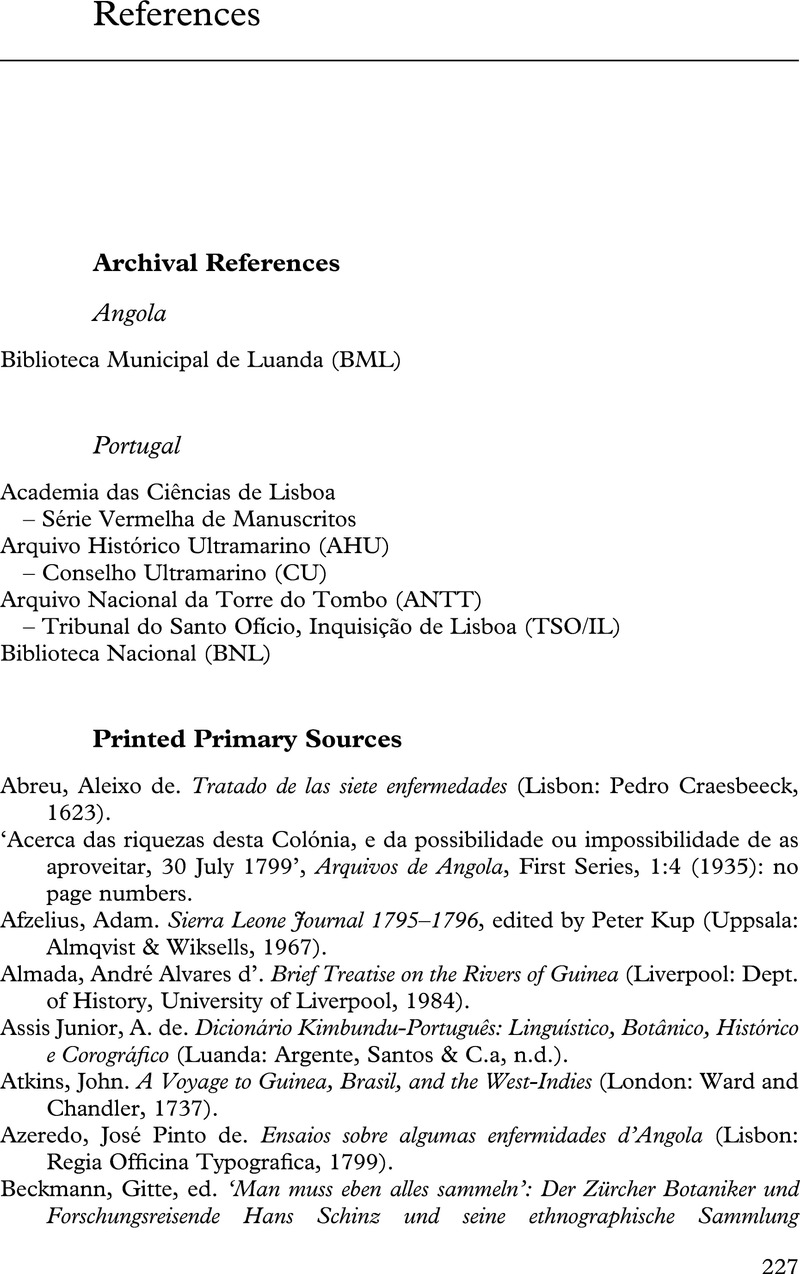Book contents
- Healing Knowledge in Atlantic Africa
- Global Health Histories
- Healing Knowledge in Atlantic Africa
- Copyright page
- Dedication
- Contents
- Figures
- Tables
- Acknowledgements
- Introduction
- 1 Healing (and Harming) Specialists
- 2 Cross-Cultural Experiments
- 3 ‘Much Better Suited Than We Are, as Regards Their Health Care’
- 4 Remedies on the Spot
- 5 Healers, Hospitals and Medicines
- 6 Treating Their Symptoms
- 7 Migrations
- Conclusion
- Book part
- References
- Index
- References
References
Published online by Cambridge University Press: 08 February 2021
- Healing Knowledge in Atlantic Africa
- Global Health Histories
- Healing Knowledge in Atlantic Africa
- Copyright page
- Dedication
- Contents
- Figures
- Tables
- Acknowledgements
- Introduction
- 1 Healing (and Harming) Specialists
- 2 Cross-Cultural Experiments
- 3 ‘Much Better Suited Than We Are, as Regards Their Health Care’
- 4 Remedies on the Spot
- 5 Healers, Hospitals and Medicines
- 6 Treating Their Symptoms
- 7 Migrations
- Conclusion
- Book part
- References
- Index
- References
Summary

- Type
- Chapter
- Information
- Healing Knowledge in Atlantic AfricaMedical Encounters, 1500–1850, pp. 227 - 249Publisher: Cambridge University PressPrint publication year: 2021

